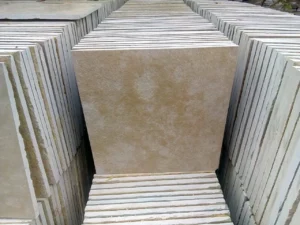Is Kota Stone Cool or Warm?
When selecting materials for flooring, the thermal properties of the material can play a significant role in the comfort and usability of the space. Kota stone, a popular flooring material known for its durability and aesthetic appeal, is often chosen for its distinct characteristics. One of the most frequently asked questions about this natural stone is whether it feels cool or warm underfoot. This article delves into the thermal properties of Kota stone to provide a comprehensive understanding of its temperature characteristics.
Understanding Kota Stone
Kota stone is a type of fine-grained limestone that is quarried from the Kota district of Rajasthan, India. It is recognized for its rich, earthy tones and natural beauty. The stone is favored for its durability, making it suitable for both residential and commercial applications, including flooring, wall cladding, and outdoor areas.
Thermal Properties of Kota Stone
Cool Nature
Kota stone is renowned for its cool nature, which is a significant advantage in hot and humid climates. The stone’s inherent properties allow it to absorb and dissipate heat efficiently, making it comfortable to walk on even during peak summer temperatures. This coolness is attributed to the high thermal mass of limestone, which enables it to maintain a lower temperature compared to the surrounding air.
Benefits of Cool Flooring
- Comfort: Floors that remain cool underfoot provide a soothing and comfortable surface, particularly beneficial in regions with high temperatures.
- Energy Efficiency: Cool floors can contribute to reducing the need for air conditioning, leading to energy savings and a lower carbon footprint for buildings.
- Health Benefits: Cooler floors can be more hygienic, as they deter the proliferation of dust mites and other allergens that prefer warmer environments.
Factors Influencing Temperature Perception
While Kota stone is inherently cool, several factors can influence the perceived temperature of the flooring:
- Room Exposure: Rooms with high exposure to sunlight might cause the stone to feel warmer, especially during peak daylight hours.
- Climate: In cooler climates, Kota stone can feel cold, making it necessary to pair it with rugs or consider in-floor heating systems for added warmth.
- Finish and Color: The surface finish and color of Kota stone can also affect its temperature perception. Polished and darker-colored stones may retain heat slightly more than rough-textured, lighter-colored stones.
Conclusion
Kota stone is primarily cool underfoot, making it an excellent choice for flooring in warm climates. Its ability to maintain a lower temperature provides comfort and contributes to the energy efficiency of buildings. However, the actual temperature perception can vary based on environmental factors, room exposure, and the specific characteristics of the stone used. For those in cooler climates or looking for a warmer feel, adding rugs or considering heating solutions can complement the stone’s natural beauty while ensuring comfort year-round. Ultimately, the decision to choose Kota stone should consider both its thermal properties and its alignment with the specific needs and preferences of the user.


